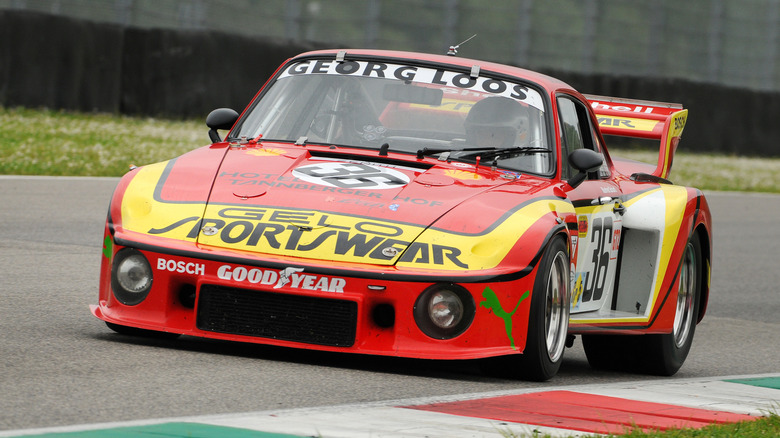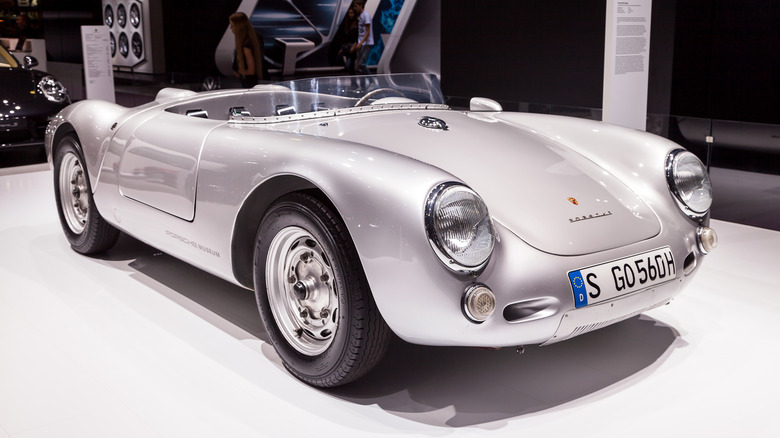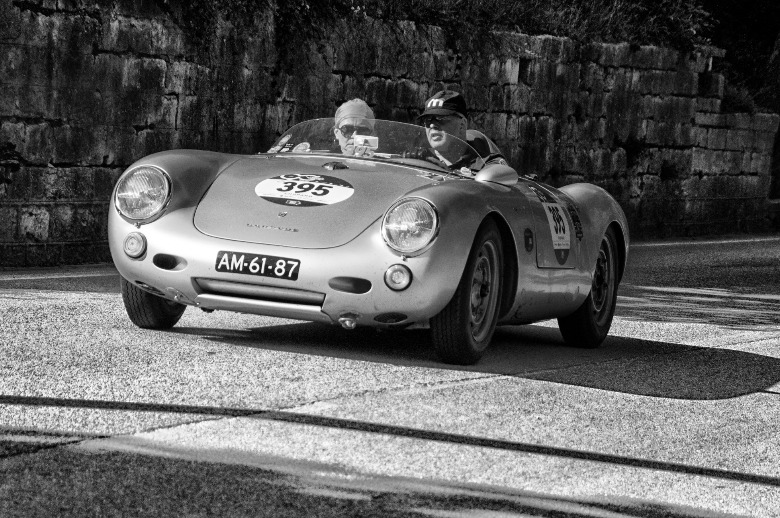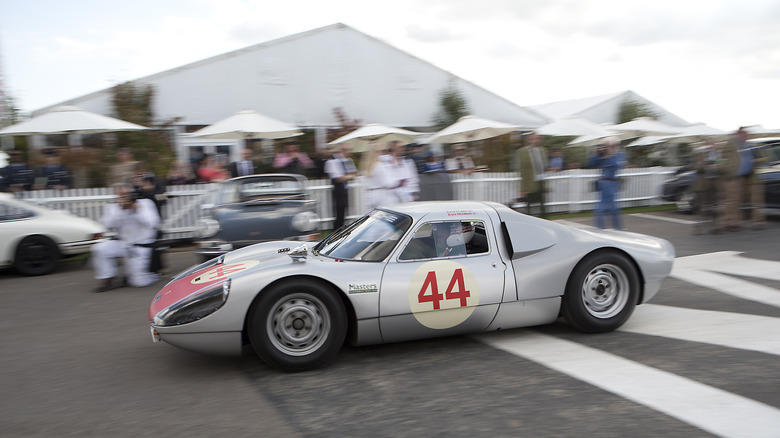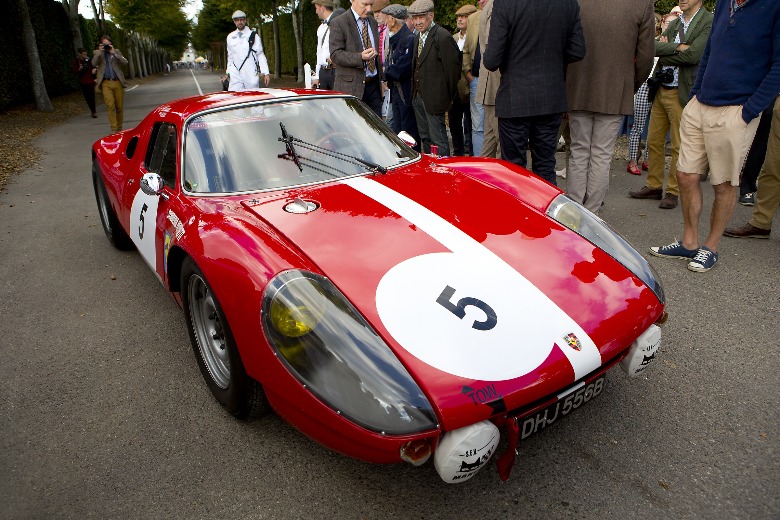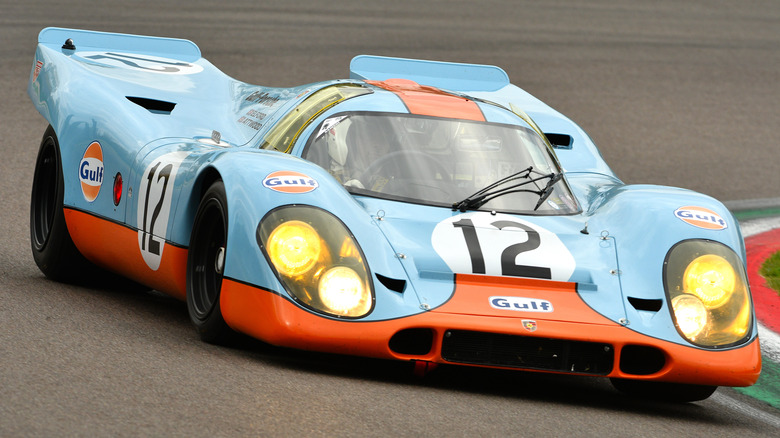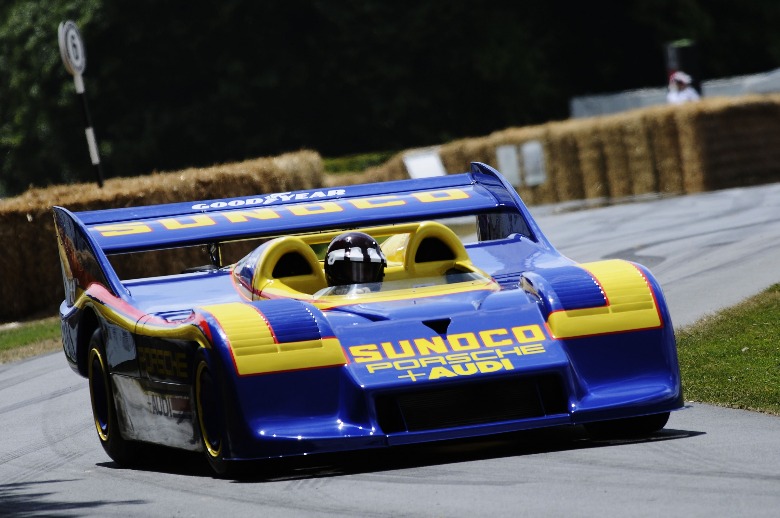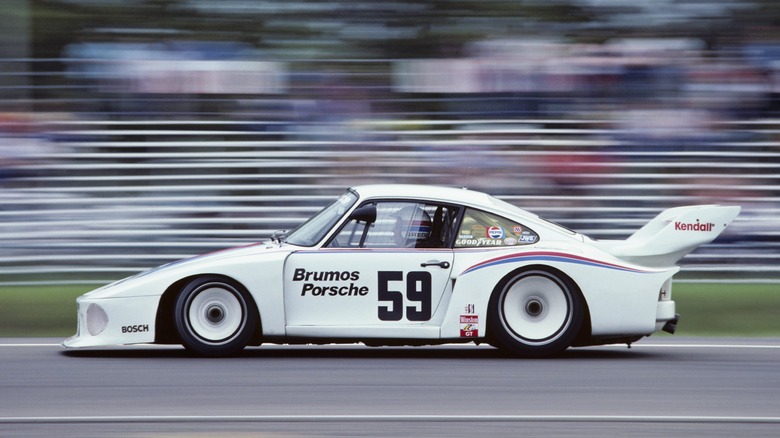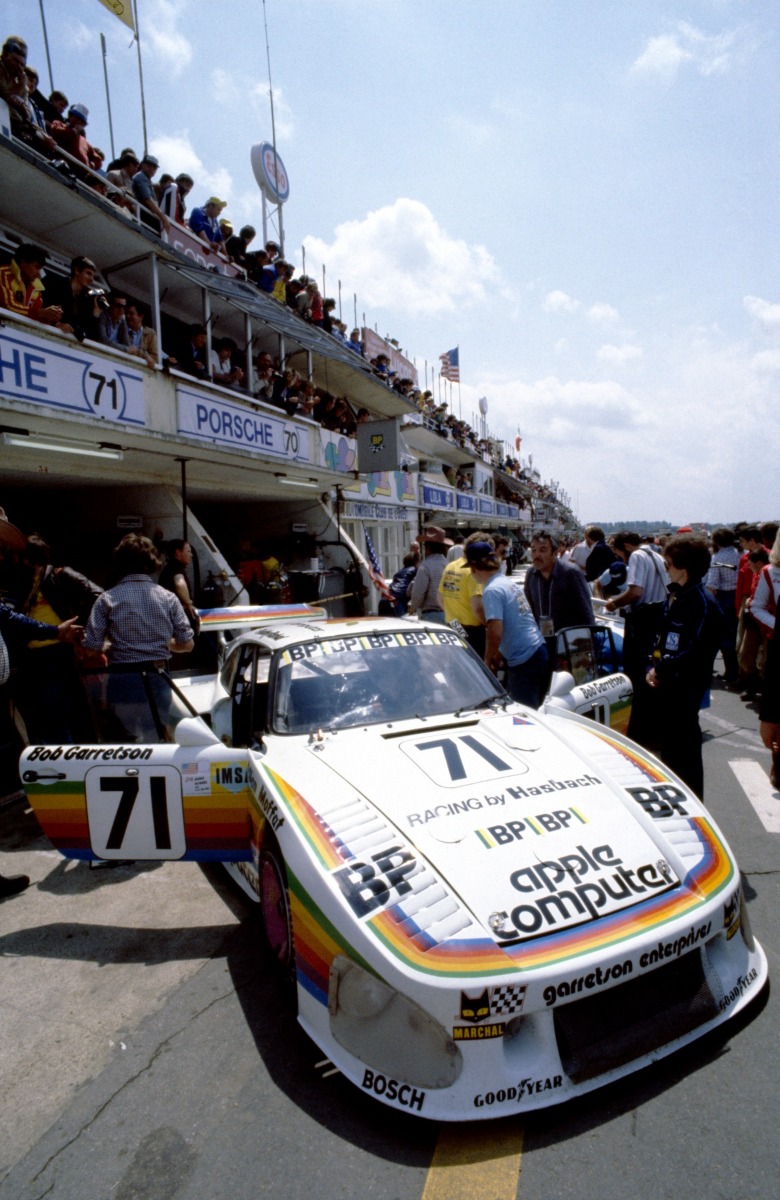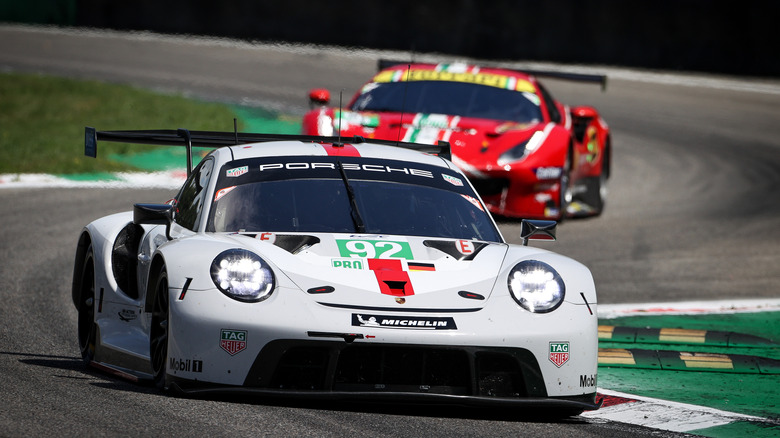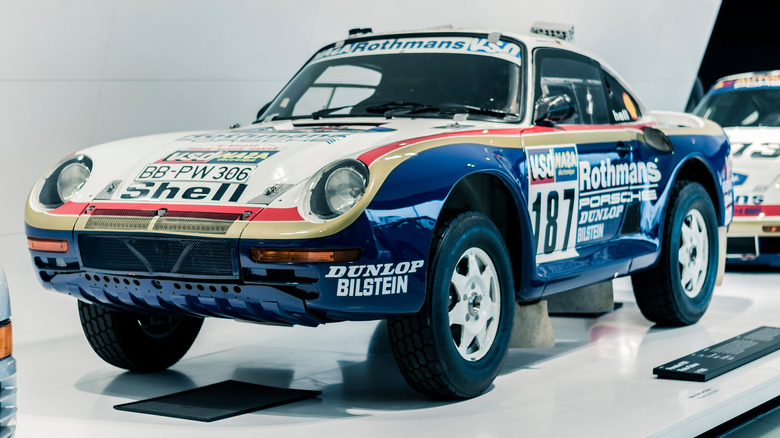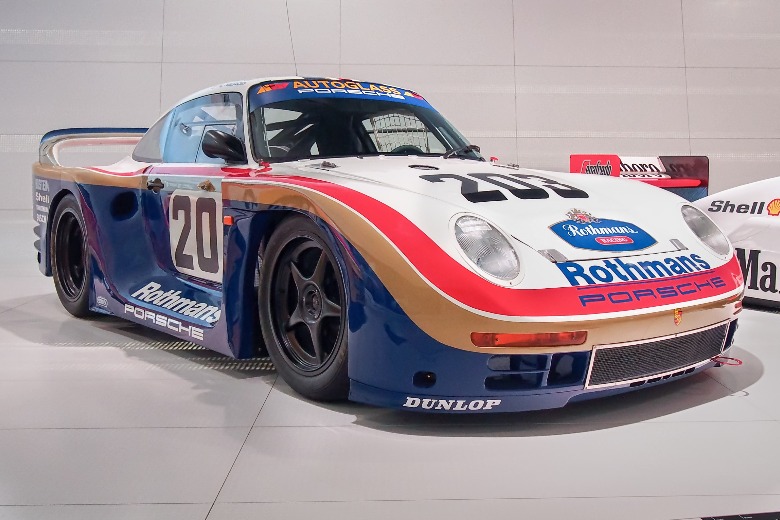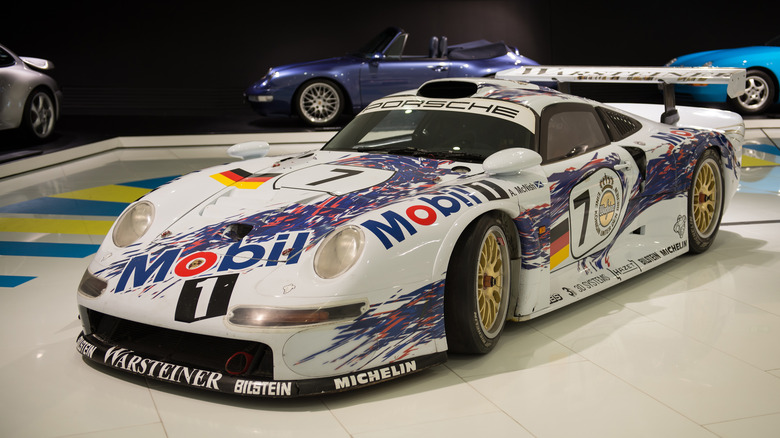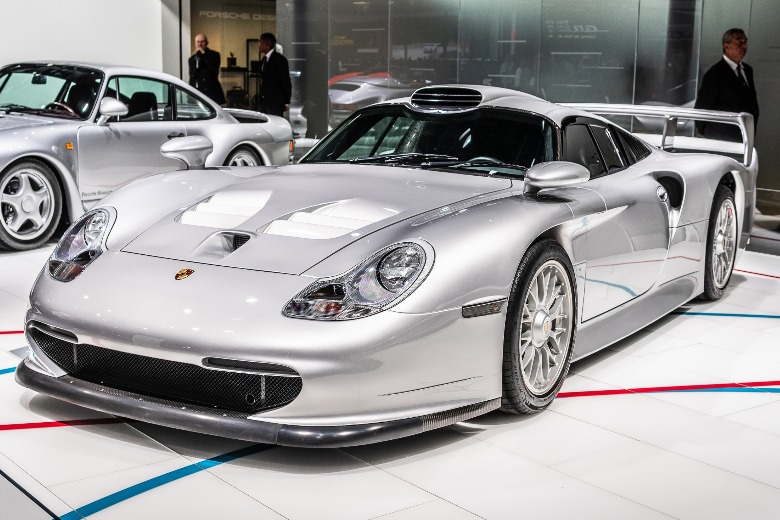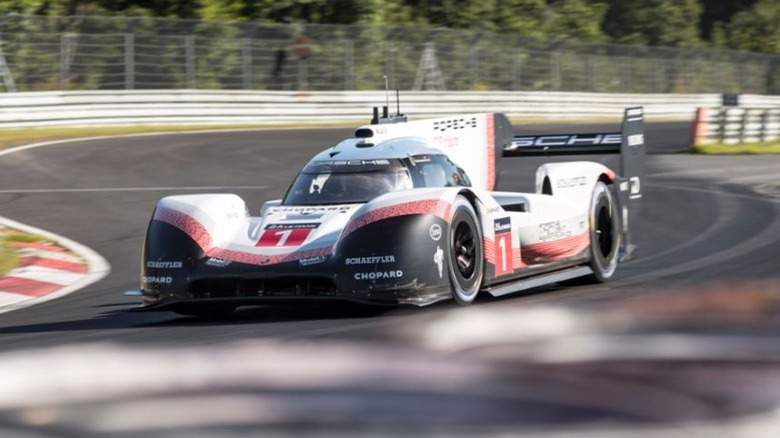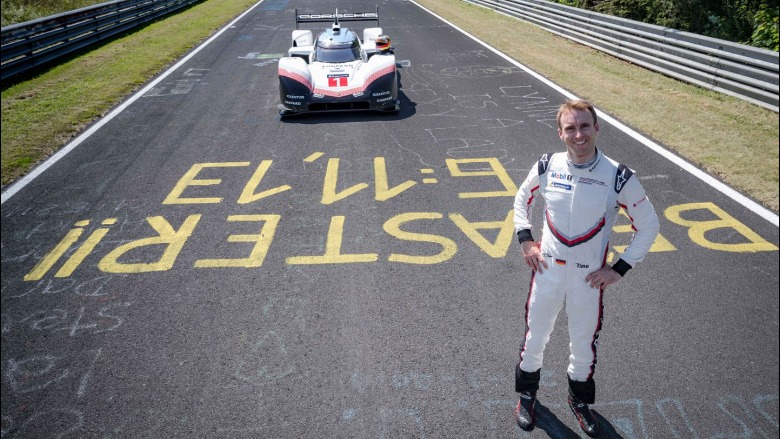The Most Iconic Porsches In Racing History
While Porsche is known primarily as a maker of high-performance road cars, the company has also had an illustrious career in racing. Through its over 70 years of history, the Porsche name has nearly always been shorthand for motorsports victory, taking podiums on the Nürburgring, Le Mans, Daytona, and beyond. According to the race's governing body, the company has walked away with 19 first-place medals at the 24 Hours of Lemans, and 108 class victories dating back to 1970.
Some of its successful race cars have been based on road-going vehicles, mostly the 911 chassis, while others are bespoke prototypes. Throughout the 20th century, the pursuit of faster laps led to experimentation with technologies like turbocharging and all-wheel drive, then electrified drivetrains in the 21st century. Now, let us take you through some of the most prolific and noteworthy Porsches to hit the racetrack, from early days to the present.
Porsche 550 Spyder
With just 90 built between 1953 and '56, the 550 is among the rarest Porsches ever made. It was also the brand's first purpose-built race car, using an aluminum body and steel tube frame (via RM Sotheby's). From the production 356, it inherited an air-cooled 1.5L boxer four-cylinder, first derived from the Volkswagen Beetle. This engine was upgraded with dual overhead camshafts, upping horsepower to 110, plenty for its light 1,200 pound chassis (via Type 550). It was also fitted with a dry-sump oil system to keep the engine running through long endurance races.
The 550 ran events at Le Mans, as well as Italy's Mille Miglia road rally. The car is known for winning a class victory at the 1954 Carrera Panamericana, which stretched nearly 2,000 miles across Mexico. Since then, the Carrera name has been branded on many Porsche sports car models, starting with a dual-cam version of the 356 (via Bonhams).
One notable racer of the 550 is Ken Miles, who would go on to be a prominent figure in Ford and Shelby racing (via Motorsport). Another car was owned by famed actor James Dean, whose life tragically ended while driving it to a track event in 1955. The vehicle was reportedly traveling down the California highway at 85 miles per hour when an oncoming car made a sudden left turn. The two collided, and Dean died at the scene. The Porsche was totaled, and its remains have since gone missing (via Hagerty).
Porsche 904 Carrera GTS
Debuting in 1964, the 904 was very much an evolution of the original 550's design. The boxer four engine remains, but it was pushed into the middle of the car for better weight distribution. Displacement was also increased to two liters, bumping it up to 153 horsepower (via Audrain Museum). Fiberglass panels were also used in place of the old aluminum body, keeping weight around 1,500 pounds, and a hardtop roof aided aerodynamics. All these design elements give the car a distinct and recognizable shape. Just over 100 examples were produced, making them extremely sought after today.
The Carrera kicked off its career with class victories at Daytona and Sebring, followed by first and second place podiums at Le Mans (via Revs Institute). However, the hype around the car died down When Porsche released the six-cylinder 911 and shelved the development of its four-cylinder engines. Still, the 904's unique look and reliable performance give it a warm place in the memories of Porsche fans.
Porsche 917
The 917 stands out as one of the most legendary racing Porsches, thanks to its funky wedge shape and awesome power output. The prototype car mounted a fearsome campaign across race tracks in the early '70s, and was truly an experimental project for Porsche. Countless variations of the 917 were created in just a few years, to test out new engines and body shapes. Most of the cars were powered by naturally aspirated flat-12 engines that put out over 600 horsepower. Massive slick tires and an aerodynamic doorstop shape were required to keep all that power down, but they didn't stop the car from being a handful for even experienced drivers.
Underneath the bodywork, the car has the appearance of a sled carrying this massive engine. The driver seating appears to be an afterthought. In 1971, a 917 KH finished first at Le Mans, averaging speeds of 138 miles per hour, which no other car would match until 2010. The same car topped out at 223 on the straightaway, which is a terrifying figure in that age of lenient safety regulations. Not to be outdone, Porsche later created the ruthless and roofless 917/30, which ran in the Can-Am racing series, and bolted two turbos onto the flat-12 to make an earth-shattering 1,580 horsepower. A 16 cylinder engine was also tested, intending to make 2,000 horses, but Porsche ultimately decided that it would've been a little excessive (via Auto Evolution).
Porsche 935
In the late 70s, the slant-nose 935 represented the peak of both turbocharging tech, and Porsche's road-going 911 chassis. Turbos had been installed previously in both the 934 race car and production 930, but this 935 really showed off what they could do, boosting it over 600 horsepower. Top speed was right up there with the 917, at 227 miles per hour. To add downforce, Porsche pinched and stretched the 911's body until it was almost unrecognizable.
FIA class rules at the time deemed that race cars had to have their doors and windows in the same position as the street version, so those were the only things that remained stock. The 935 campaigned at Daytona, Le Mans, and contemporary circuits, sweeping over 150 wins from 1977 through 1984 (via Forbes). Famously, the car carried an Apple Computer sponsorship in 1980, along with an iconic rainbow livery to match. In 2018, a modern 935 tribute car was also revealed, which was essentially a track-only version of the 991 GT2 RS (via The Drive).
Porsche 911 RSR
Like the old 935, this 911 RSR wrings ultimate performance out of a production sports car chassis, this time being based on the modern water-cooled 911. Modifications are extensive, with extreme aero, widened wheel arches, and fat, slick tires on single-lock rims. The most drastic change, however, is in the engine bay. The typical flat-six has been flipped 180 degrees, so it's now sitting where the back seats used to be.
This effectively converts the 911 into a mid-engine car. The exhaust is now routed out the sides, just in front of the rear wheels. The engine has also been punched out to 4.2 liters, making around 507 naturally aspirated horsepower. The current RSR was unveiled in 2019. It's since taken a first and second place finish at the Twelve Hours of Sebring in 2020, reached third in its class at Le Mans in 2021, and is currently heading into the 2022 World Endurance Championship.
Porsche 959
The 959 was Porsche's high-tech flagship for the late '80s, once again pushing the aging 911 chassis to its performance limits. Like the 935, this car employed twin turbochargers, this time paired with a new all-wheel-drive system to put all that power down at once. Compared to the 911, the supercar was lengthened, lowered, and given a new futuristic design (via Car and Driver). Two racing versions of the 959 were created, neither of them being particularly successful.
Porsche wanted to put the car's all-wheel-drive to a real test, which led them to rally racing through sand and mud. The plan was to enter the 959 into WRC's wild Group B class, alongside rally monsters like the Audi Quattro and Ford RS200 (via Motor Authority). However, safety concerns caused Group B to be canceled before the car was even ready to compete. Instead, three 959s were entered into the Paris-Dakar race in 1985 and '86, with one claiming first place on the second outing.
After brief rally success, an attempt was made to turn the 959 into a traditional road racer, dubbed the 961. It inherited the street car's 2.8L turbo engine, all-wheel-drive, and six-speed manual, with horsepower boosted up over 600. Only one was built. It became the first all-wheel-drive car to run at Le Mans in 1986 and saw use at Daytona that same year, then Le Mans again in '87 where the 961 crashed out and was unceremoniously sunset by Porsche (via Evo).
Porsche 911 GT1
A 911 in name only, the GT1 was a fully specced mid-engine prototype racer. It did manage to preview things that would later show up in the street car, such as a water-cooled engine. In fact, its flat-six power plant would later show up in production versions of the 996 Turbo and GT3. Debuting in 1996, the car shared almost nothing with the contemporary 993, except for a front fascia. That piece too was replaced in 1997, refreshed to preview the styling of the upcoming 996 (via DriveMag).
It ran at Le Mans throughout the late 90s, bringing several podiums along the way. To meet homologation rules, a handful of street-legal GT1s had to be built, known as "Straßenversion". These cars were decked out with turn signals, full interiors, and de-tuned versions of the 3.2-liter turbocharged engine that still made over 500 horsepower. All in all, this car served as a handy weathervane to show how Porsche sports car development would look heading into the 21st century.
Porsche 919 Hybrid Evo
It's fair to say that the 919 prototype is a culmination of nearly everything that Porsche has learned in street car and race car development. They've sandwiched enough advanced technology in this package to create one of the fastest vehicles racing has ever seen. It starts with a 2.0-lite V4 engine, (an atypical layout for Porsche) which is boosted with a single turbo to over 700 horsepower. This engine drives the rear wheels, united with an electric motor that can send an additional 400 horsepower up front. The car took Le Mans wins in 2015, '16, and '17.
In 2018, Porsche created the 919 Evo, which was essentially untethered to any racing series regulation. This version of the car was built with one intention: to set the fastest-ever lap at Germany's 12-mile Nürburgring circuit. The previous record of 6:11.13 was set by a Porsche 956 in 1985, and the 919 was able to beat by nearly a full minute, posting 5:19.55. This demanded an average speed of 145 miles per hour, topping out at 229 on the longer straights.
The 919 Hybrid moves in ways that seem to bend the laws of physics, but technology always moves on, always improves. In a decade or two, we'll probably see a Porsche race car that makes the 919 look slow. Even then, it will be a touchstone for motorsports innovation, as all these cars have been.
